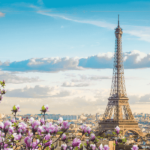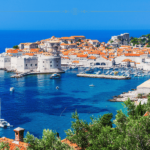The enchanting landscapes and historic treasures of Italy, long a dream destination for millions of travelers, are now facing an unprecedented challenge that threatens to overshadow their timeless beauty. As the Vatican started its landmark Jubilee Year, a perfect storm of increasing tourism and organized criminal activity is transforming some of the nation’s most beloved destinations into potential danger zones.

What was once considered a relatively safe tourist destination is rapidly changing. The European Pickpocketing Index has revealed a stark reality for travelers: Italy has emerged as the most challenging destination for tourists hoping to keep their personal belongings secure. The numbers are alarming – with an staggering 478 pickpocketing mentions per million British visitors recorded at some of the country’s most iconic locations.
Hotspots of Vulnerability
Rome, the eternal city, stands at the epicenter of this growing crisis. The iconic Trevi Fountain, which typically welcomes around 12,000 visitors daily, has been identified as the worst location for pickpocketing in the entire country. Recently reopened after months of renovation, the site now manages visitors in carefully controlled groups of 400, yet the threat remains persistent.
The city’s transportation infrastructure has become a particular concern. Metro stations like Termini and Piramide, along with the popular bus route 64 connecting Termini Station to the Vatican, have become hunting grounds for sophisticated theft operations. These are not random incidents, but carefully orchestrated criminal activities.
Local experts paint a deeply troubling picture of the current situation. What was once considered petty crime has evolved into a complex, organized criminal enterprise. Theft gangs are operating with military-like precision, utilizing specialized roles and intricate strategies to target unsuspecting tourists.
These groups typically operate with a structured approach: women perform the actual thefts while male accomplices keep watch for law enforcement. They are not local residents but arrive from surrounding areas, carefully planning their operations to maximize their chances of success. The scale of the problem has reached a point where locals who attempt to intervene risk physical confrontation.
The upcoming Jubilee Year adds another layer of complexity to the situation. This significant religious event, celebrated every 25 years by the Catholic Church, is expected to draw more than 30 million visitors to Italy. While traditionally a time of spiritual significance, it now represents a potential peak season for criminal activities.
The massive influx of visitors creates perfect conditions for pickpocketing. Crowded attractions, momentary distractions, and the sheer volume of people provide ideal cover for organized theft groups. The Vatican’s opening of Holy Doors at major basilicas, typically a moment of spiritual celebration, now comes with an unexpected caveat of increased personal risk.
The situation in Venice offers a particularly stark illustration of the broader issues. Once considered a safe haven for tourists, the city has seen a dramatic transformation. Popular areas like Rialto, San Marco, and Piazzale Roma have become known hotspots for organized criminal activity.
Tour guides who once confidently assured visitors of the city’s safety now find themselves warning tourists about the increasing risks. The very characteristics that make these destinations attractive – dense crowds, narrow streets, and numerous distractions – have become weapons in the arsenal of criminal groups.
The list of affected locations reads like a who’s who of Italian tourism. Beyond the Trevi Fountain, other major attractions have become prime targets:
The Colosseum in Rome, the Pantheon, Milan’s Duomo, and Florence’s Gallerie Degli Uffizi have all reported significant increases in theft incidents. These are not random locations but carefully chosen sites where the combination of tourist concentration and momentary distraction creates perfect conditions for criminal activity.
This is not merely a problem of lost wallets or stolen smartphones. The increasing safety concerns have broader implications for Italy’s tourism industry. Countries rely heavily on repeat visitors and positive word-of-mouth recommendations, and repeated incidents of theft can dramatically impact a destination’s reputation.
The UK Foreign, Commonwealth and Development Office has taken the unusual step of advising British travelers to exercise extreme caution. This is not a blanket warning against travel, but a clear indication of the seriousness of the current situation.
Visitors to Italy must now approach their travels with a heightened sense of awareness. This means more than simply keeping a hand on one’s wallet or bag. Travelers need to be constantly alert, understanding that theft operations are sophisticated and can occur in the most unexpected moments.
Recommended strategies include using money belts, keeping valuables in hotel safes, avoiding ostentatious displays of wealth, and maintaining constant awareness of one’s surroundings. The days of carefree, relaxed tourism in these destinations are temporarily on hold.
The current situation represents a complex intersection of economic disparity, tourism pressure, and organized criminal activity. As tourism becomes increasingly central to local economies, the paradox of attracting visitors while protecting them becomes more pronounced.
Local authorities are struggling to balance the economic benefits of tourism with the need to ensure visitor safety. The Jubilee Year presents both an opportunity and a significant challenge in this ongoing battle.
What’s unfolding in Italy is not simply a law enforcement issue but a systemic challenge that touches on broader social and economic dynamics. The criminal groups operating in these areas are not simply opportunistic thieves but part of sophisticated networks that have adapted to the changing landscape of international tourism.
While the current situation is serious, it’s important to recognize that Italy remains one of the world’s most beloved tourist destinations. The country’s rich history, extraordinary culture, and warm hospitality continue to draw millions of visitors each year.
The current challenges, while significant, are being addressed. Local authorities, tourism boards, and law enforcement are working to develop more robust strategies to protect visitors and maintain Italy’s reputation as a world-class destination.
For travelers, the message is clear: vigilance is key. The magic of Italy – its art, history, cuisine, and culture – remains unchanged. But the approach to experiencing this magic must now come with a more calculated and aware mindset.




